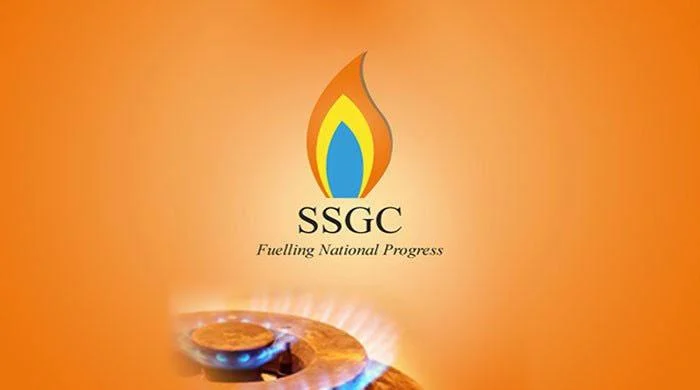In a significant move, the Government of Pakistan has announced an increase in the prices of Regasified Liquefied Natural Gas (RLNG) by 3.87%. This decision, effective immediately, will impact various sectors of the economy and has sparked discussions about its potential consequences for businesses, households, and the overall economic landscape of the country.

- Pakistan raises RLNG prices by 3.87% for SNGPL and SSGC consumers.
- Brent prices rising in the international market is causing the increase in RLNG prices.
- OGRA sets RLNG prices for October: SNGPL $13.33/MMBtu, SSGC $13.87/MMBtu.
- The tariff of RLNG started declining in January 2023, with a reduction of up to 2.2%. However, there have been three increases in RLNG prices since then, in May, September, and October.
- RLNG prices include LNG terminal charges, transmission losses, port charges, and state-owned importer margins.
What is MMBtu in the Gas Bill?
In your gas bill, MMBtu stands for “million British thermal units,” which is a standard unit of measurement used to quantify the amount of energy contained in natural gas. One British thermal unit (Btu) is the amount of energy needed to heat one pound of water by one degree Fahrenheit. Therefore, one MMBtu represents a substantial amount of energy—enough to heat a large amount of water.
This measurement is crucial for understanding the volume of gas you have consumed because it directly correlates to the energy your household or business utilizes. Gas companies use MMBtu to calculate your gas usage and determine your billing based on the rates per MMBtu, helping provide a clear and standardized way to measure and charge for natural gas consumption.
Understanding RLNG and Its Importance
RLNG is a vital component of Pakistan’s energy mix, serving as a crucial source of fuel for power generation, industrial processes, and domestic consumption. It is imported in its liquefied form (LNG) and then regasified for distribution through the existing natural gas infrastructure. Given Pakistan’s growing energy needs and declining indigenous gas reserves, RLNG plays a critical role in ensuring a stable and reliable supply of energy.
The Price Hike: Key Details
The 3.87% increase in RLNG prices has been attributed to several factors, including fluctuations in global LNG prices, changes in exchange rates, and adjustments in import costs. The Sui Southern Gas Company (SSGC) and Sui Northern Gas Pipelines Limited (SNGPL), the two main gas distribution companies in Pakistan, will implement the new pricing structure.
Impact on Different Sectors
- Industrial Sector: The industrial sector, which relies heavily on RLNG for various manufacturing processes, is expected to face increased production costs. Industries such as textiles, cement, and fertilizers may experience a rise in their operating expenses, potentially leading to higher prices for consumers.
- Power Generation: RLNG is a key fuel for power plants, and the price hike may result in increased electricity tariffs. Power producers will need to adjust their cost structures, and this could translate into higher energy bills for consumers and businesses alike.
- Domestic Consumers: Households using RLNG for cooking and heating purposes will see a direct impact on their monthly gas bills. The increase may put additional financial pressure on families, especially those already grappling with rising living costs.
- Transportation Sector: The transportation sector, particularly public and commercial vehicles that run on RLNG, will also be affected. Higher fuel costs could lead to increased transportation fares and logistics expenses, impacting the overall cost of goods and services.
SSGC Price Analysis
RLNG price hike to impact consumers, average bill to increase by 5%.
Govt explains RLNG price hike due to international Brent price rise, but critics demand cushion for consumers.
The increase in RLNG prices is also likely to have an impact on businesses. Businesses that rely heavily on natural gas, such as fertilizer plants and textile mills, will likely increase their costs. This could lead to higher prices for consumers of these goods and services.
What is the Price of RLNG Per MMBtu?
The updated pricing for Regasified Liquefied Natural Gas (RLNG) has been announced, with distinct rates set for different consumer groups in Pakistan. For customers connected to the Sui Northern Gas Pipelines Limited (SNGPL), the price of RLNG is now set at $13.7440 per Million British Thermal Units (MMBtu).
Meanwhile, for those serviced by the Sui Southern Gas Company (SSGC), the rate is slightly higher at $14.0506 per MMBtu. These new prices are applicable immediately and reflect the latest adjustments in the global energy market, which can influence domestic pricing due to import costs. These rates are critical for industries, power generation companies, and commercial entities that rely on RLNG for their energy needs.
Conclusion
The increase in RLNG prices is a significant development for Pakistan. It is likely to hurt both consumers and businesses. Govt should mitigate RLNG price hike impact on consumers. The 3.87% increase in RLNG prices is a significant development with wide-ranging implications for Pakistan’s economy and its citizens. While it poses certain challenges, it also presents an opportunity to adopt more sustainable and efficient energy practices.